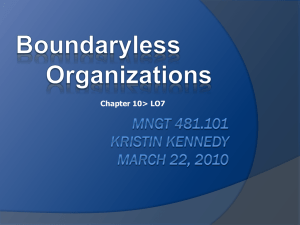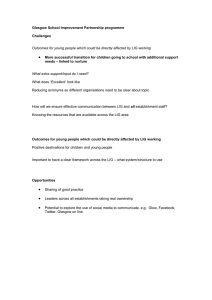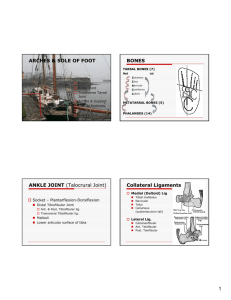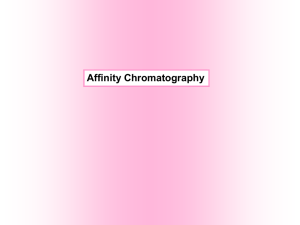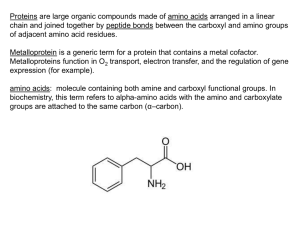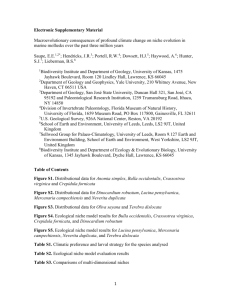Alternative instructions for data analysis with SPSS
advertisement
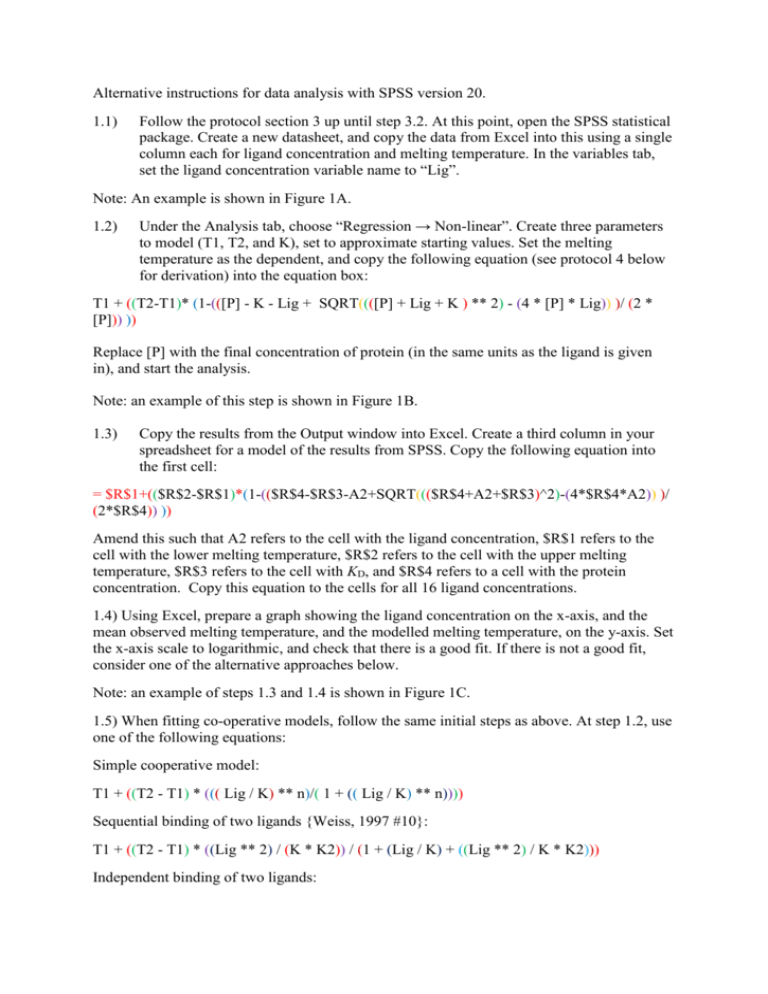
Alternative instructions for data analysis with SPSS version 20.
1.1)
Follow the protocol section 3 up until step 3.2. At this point, open the SPSS statistical
package. Create a new datasheet, and copy the data from Excel into this using a single
column each for ligand concentration and melting temperature. In the variables tab,
set the ligand concentration variable name to “Lig”.
Note: An example is shown in Figure 1A.
1.2)
Under the Analysis tab, choose “Regression → Non-linear”. Create three parameters
to model (T1, T2, and K), set to approximate starting values. Set the melting
temperature as the dependent, and copy the following equation (see protocol 4 below
for derivation) into the equation box:
T1 + ((T2-T1)* (1-(([P] - K - Lig + SQRT((([P] + Lig + K ) ** 2) - (4 * [P] * Lig)) )/ (2 *
[P])) ))
Replace [P] with the final concentration of protein (in the same units as the ligand is given
in), and start the analysis.
Note: an example of this step is shown in Figure 1B.
1.3)
Copy the results from the Output window into Excel. Create a third column in your
spreadsheet for a model of the results from SPSS. Copy the following equation into
the first cell:
= $R$1+(($R$2-$R$1)*(1-(($R$4-$R$3-A2+SQRT((($R$4+A2+$R$3)^2)-(4*$R$4*A2)) )/
(2*$R$4)) ))
Amend this such that A2 refers to the cell with the ligand concentration, $R$1 refers to the
cell with the lower melting temperature, $R$2 refers to the cell with the upper melting
temperature, $R$3 refers to the cell with KD, and $R$4 refers to a cell with the protein
concentration. Copy this equation to the cells for all 16 ligand concentrations.
1.4) Using Excel, prepare a graph showing the ligand concentration on the x-axis, and the
mean observed melting temperature, and the modelled melting temperature, on the y-axis. Set
the x-axis scale to logarithmic, and check that there is a good fit. If there is not a good fit,
consider one of the alternative approaches below.
Note: an example of steps 1.3 and 1.4 is shown in Figure 1C.
1.5) When fitting co-operative models, follow the same initial steps as above. At step 1.2, use
one of the following equations:
Simple cooperative model:
T1 + ((T2 - T1) * ((( Lig / K) ** n)/( 1 + (( Lig / K) ** n))))
Sequential binding of two ligands {Weiss, 1997 #10}:
T1 + ((T2 - T1) * ((Lig ** 2) / (K * K2)) / (1 + (Lig / K) + ((Lig ** 2) / K * K2)))
Independent binding of two ligands:
T1 + ((T2 - T1) * ((Lig ** 2) / K * K2) / (1 + (2 * Lig / K) + ((Lig ** 2) / K * K2)))
Note: For these equations, it is also necessary to add in an additional parameter “n” for the
simple cooperative model, and a parameter “K2” for the models for two ligands.
1.6) After determining the results for the parameters, prepare an additional column in the
Excel spreadsheet as before. Replace the equation given in step 3.4 with the following
equations for the three cases, placing the fit value for n or K2 in cell R5:
Simple cooperative model:
= $R$1+(($R$2-$R$1)*(((A2/$R$3)^$R$5)/(1+((A2/$R$4)^$R$5))))
Sequential binding of two ligands:
= $R$1+(($R$2-$R$1)*((A2^2)/($R$3*$R$5))/(1+(A2/$R$3)+ ((A2^2)/($R$3*$R$5))))
Independent binding of two ligands:
= $R$1+(($R$2-$R$1)*((A2^2)/($R$3*$R$5))/(1+(2*A2/$R$3)+ ((A2^2)/($R$3*$R$5))))
1.7) When fitting binary melting curves, follow the protocol section 5 up until step 5.5. Here,
Return to SPSS. Create a new datasheet, and copy the data from Excel into this using a single
column each for ligand concentration and melting temperature. In the variables tab, set the
ligand concentration variable name to “Lig”.
1.8) Under the Analysis tab, choose “Regression → Non-linear”. Create one model parameter
(K), set to an approximate starting value. Set the proportion bound as the dependent, and
copy the following equation (adapted from the equation in section 3.3) into the equation box:
([P] + K + Lig - SQRT((([P] + Lig + K ) ** 2) - (4 * [P] * Lig)) )/ (2 * [P])
Replace [P] with the final concentration of protein (in the same units as the ligand is given
in), and start the analysis.
1.9) Copy the results from the Output window into Excel. Create a third column in your
spreadsheet for a model of the results from SPSS. Copy the following equation into the first
cell:
=1-(($R$2-$R$1-A2+SQRT((($R$2+A2+$R$1)^2)-(4*$R$2*A2)) )/ (2*$R$2))
Amend this such that A2 refers to the cell with the ligand concentration, $R$1 refers to the
cell with KD, and $R$2 refers to the cell with the enzyme concentration. Copy this equation to
the cells for all 16 ligand concentrations.
1.10) Using Excel, prepare a graph showing the ligand concentration on the x-axis, and the
mean observed melting temperature, and the modelled melting temperature, on the y-axis. Set
the x-axis scale to logarithmic, and check that there is a good fit. If there is not a good fit, it is
likely that a different approach will be needed.
Figure S1: Example of data analysis in SPSS. A: Example of data transferred to SPSS, ready
for analysis. B: Data analysis with SPSS: set-up of the non-linear regression analysis
window. C: Final confirmation check of the results, showing a model of the results plotted
against the experimental data.
